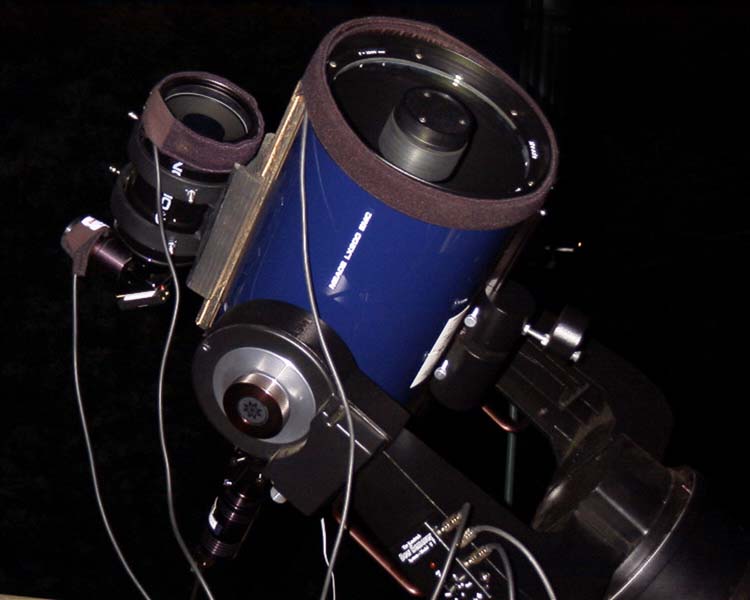| Meade LX 200 |
 |
|
This photo
shows my 8" f10 Meade LX 200 all set up and ready to go. So
why the 8" and why the f10 and why the LX 200 and not a Celestron
Ultima. Read my reasons below. Click
here to go back.
|
| Meade LX 200 |
 |
|
This photo
shows my 8" f10 Meade LX 200 all set up and ready to go. So
why the 8" and why the f10 and why the LX 200 and not a Celestron
Ultima. Read my reasons below. Click
here to go back.
|
| Why the 8"? |
| Weight and the ability to set it up by myself. The 10 adds about 20 pounds to the scope. Not much in itself, but when you consider the weight of a guide scope and counter weights, I saw the 10" scope weight getting close to 70 pounds. Too much for me to handle comfortably by myself. |
| Why the f10? |
| Planets. It's much easier to step a f10 down to f3.3 for CCD imagining than it is to step a f6.3 up to f20 or f30 for planetary imagining. Also, look at the "Why the MX-5C" page and you'll see that an f3.3 system gets over 98% of the objects you might want to image, even with a small chip like the MX-5C uses. |
| Why the Meade and not the Celestron? |
| Reason #1: My Megastar star charting program had an interface for the LX 200, but not the Celestron. |
| The LX 200 has a very good support base. It is mature enough and the interfaces are well enough defined that most manufacturers will make sure their products interface with it. I was also looking towards the future to get an autotracker and felt that the LX 200 interface would be supported. |
|
Reason
#2: The scopes were equally priced and generally comparable.
|
| I read lost of posting about Meade quality control and about the Celestron having better optics. Unfortunately all of these seemed more subjective comments. I couldn't find any definite advantage of one scope over the other. |
|
Reason
#3: The MAPUG seemed a very good
resource for LX 200 users.
|
| The Meade Advanced Product Users Group (MAPUG) is full of material and resources for LX 200 users. A similar one may exist for Celestron products, but I have not located it. |
|
Reason
#4: The LX 200 has more robust drive motors.
|
| The LX 200 drive motors are designed for the 10" scope and can easily handle the 8" scope. It seemed to me that they would handle load unbalances much more easily than the Celestron, which is powered by batteries. I knew I would be hanging all kind of objects off of the scope (35 mm Cameras, CCD Cameras and Guide Scopes). I had previous expierence with a scope that had an underpowered drive system. It was time consuming to re-balance after every accessory change. I did not think I would have to be this cautious with the Celestron, but I felt very sure that the LX 200 would give me no such problem. I was not as confident that more attention to balenance would not be required for the Celestron. So far my expectations regarding the robust LX 200 drive motors have proven correct. |